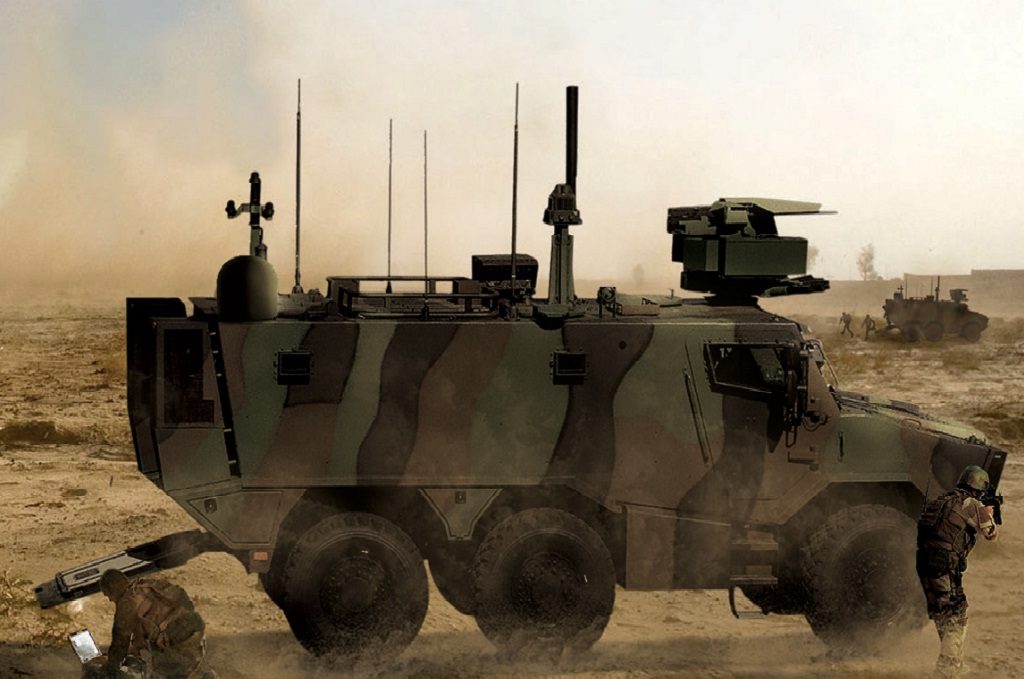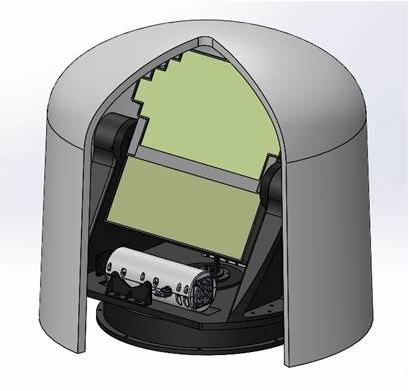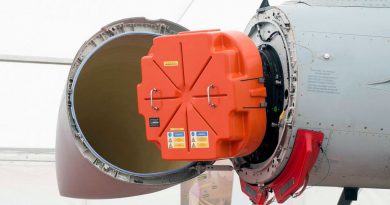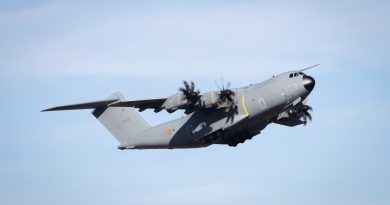
New SATCOM-on-the move solution from Airbus
Communications are key to any military operations, and when operating in areas where line-of-sight communications are difficult satellite communications, SATCOM in short, become vital.
Initially something reserved to Special Forces operating in depth within enemy lines and to commanders, SATCOM-on-the-move solutions allowing warfighters to maintain communications in any situation while their vehicle is moving are becoming more and more popular.
At Eurosatory Airbus Defence & Space would have unveiled a land-based new solution in that field that offers units in operation a secure broadband connection with high availability to exchange videos, voice and operational flows in fast moving circumstances. “The system is a follow up to a previous X-band SATCOM-on-the-move terminal developed together with Inster, a Spanish engineering company part of the CPS Group, specialised in defence and security telecommunications, and already provided to customers in Europe and the Middle-East, over 70 such terminals having been sold,” Christophe Maurel, Head of Satcoms Systems and Ground Segment Solutions at Airbus Defense and Space tells EDR On-Line.
However the French Armée de Terre was looking at something with increased performances, both in terms of throughput availability. “Lessons learned from the deployments in Africa led to requirements including resistance to sand storm and tropical rains, the Ka band being sensible to pouring rain, although its high throughput capabilities, due to the wider electromagnetic spectrum had to be maintained, the high gain obtained within limited antenna dimension being another positive element of such band,” Maurel explains.
Based on those requirements Airbus received a demonstration contract for a SATCOM on-the-move terminal which output will be a working prototype capable to withstand all constraints set by the military customer. Airbus has developed a dual-band system known as OTM-T (On-The-Move Terre), which is compact, around 800 mm in diameter and 400 mm in height, and lightweight less than 60 kg, which can easily be integrated in any armoured vehicle. It features two antennas that are sheltered in a ballistic radome, which ensures protection against small arms fire as well as against weather. The OTM-T works on two different frequency bands that are used non simultaneously, the X-band and the Mil-Ka band, respectively 7.25 GHz to 7.75 GHz (Space to Earth) and 7.9 GHz to 8.4 GHz (Earth to Space) for the former, and 20/30 GHz for the latter. The throughput, when using the ballistic radome that inevitably generates a slight reduction on performances compared to a standard one, is respectively up to 1 Mbps in the X-band, with up to 100 kbps in worst-case conditions, the Mil-Ka allowing for a 2 Mbps throughput with a 512 kbps in degraded environment. The signaller can easily shift from one band to the other without any need to modify the aiming or doing any other operation to the antenna. This allows him to shift from the Ka- to the X-band in case of heavy rain ensuring communications between the vehicle and higher echelons, a problem that arose during recent missions in Africa. This also led to very stringent operational environmental conditions in term of temperature, vibrations, dust, sand etc. As for the radome, its deformation when hit by a round compatible with its protection level must be compatible with the antenna rotation, its design taking in count a maximum deformation tolerance.

“The two-band configuration also allows countering possible jamming actions by the opponent, the split between the two bands being considerable, the X-band wavelength being roughly three times that of the Ka-band, and the link being provided often by different satellites, which makes it very difficult to disrupt both links,” Mr. Maurel adds. Currently French forces use mostly the Syracuse-3 satellite in X-band and the French-Italian Athena-Fidus satellite in the Mil-Ka band. The system is compatible with all IP modems such as DVB (Digital Video Broadcasting), SCPC (Single Channel Per Carrier), and military frequency hopping waveforms.
The development work is once again carried out in cooperation with Inster of Spain, following the successful work done together in the previous single-band SATCOM terminal. The two-band OTM-T passed the Critical Design Review with the Délégation Générale de l’Armement (DGA) and the Section Technique de l’Armée de Terre (STAT) in May 2020. “We are now going to produce the SATCOM terminal, integrate it into a vehicle, and carry out industry testing in order to deliver it in early 2021 to the DGA and the STAT, customer demonstrations being planned for Q2 2021,” Maurel tells us. According to Airbus responsible for SATCOM systems this will allow the OTM-T to meet the timeframe of the French Army Scorpion programme around 2024-25. The French Army is looking at common interfaces with the SATCOM terminal on all those vehicles that should receive it; according to currently available information the SATCOM on the move capability should be installed on Griffon Command Post and Serval Command Post vehicles, part of the Scorpion programme, while also at least part of VBCI Command Post vehicles should be equipped with the terminal.
Images courtesy Airbus



